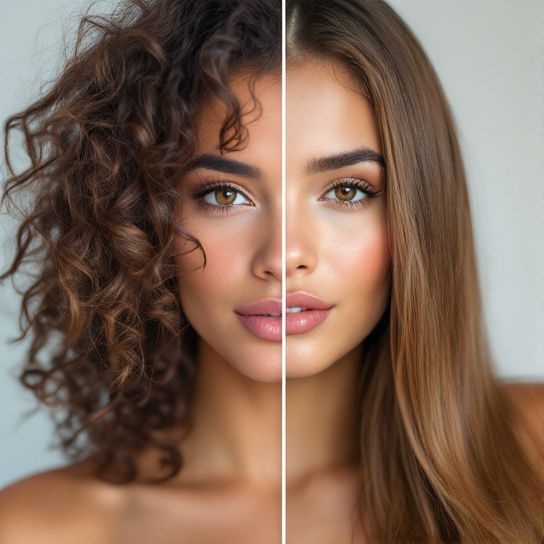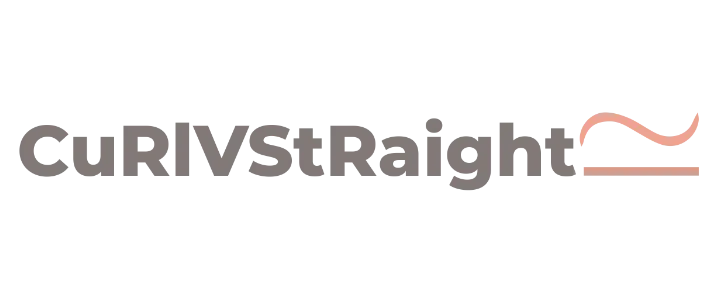
The styling world is buzzing with an intriguing question: is straight hair making a comeback in what has undeniably become the “curl era”? For over a decade, curly, wavy, and textured hair has ruled the fashion gaze, celebrating the natural flow and dynamic volume that these textures bring. Yet, there’s a palpable stir suggesting a resurgence in the popularity of sleek, straight hair, even as the world revels in curls. Let’s delve into this fascinating debate with depth, exploring whether there genuinely is an anti-texture movement underway or if it’s simply a part of the diversity of choice in personal style.
A Historical Perspective on Hair Trends
Hair as a fashion statement has always reflected broader socio-cultural trends. In the 1960s and 1970s, long, flowing straight hair epitomized the counterculture aesthetic, matching the era’s preference for unkempt and natural looks. Fast forward to the 1980s, and volume became king, with perms and teased hair symbolizing the maximalist ethos of the time.
The early 2000s saw a streak of stick-straight hair largely influenced by iconically sleek figures such as Jennifer Aniston’s “Rachel” haircut. The emergence of flat irons and straightening treatments made pin-straight hair an attainable dream.
However, post-2010s, a noticeable shift occurred with people embracing a more natural texture. The rise of social media platforms initiated and propagated movements that celebrated natural curls and waves. From the Curly Girl Method to salon treatments that enhance texture rather than suppress it, the “curl era” was borne out of an environment that lauded individuality and authenticity.
Contextualizing the Current Scene
Enter 2023, and with it, murmurs of a pivot back to sleek, straight hair, a trend contradictory to the prevailing celebration of curls. Magazines are spotlighting sleek styles on their covers, red carpets are populated by straight tresses, and social media influencers spotlight the technique of achieving glass-like strands. But does this reflect a definitive change in tide, or is it merely a stylistic oscillation inherent to fashion itself?
The Technical Underpinnings of the Straight Hair Comeback

**1. Styling Innovation and Technology:**
Advancements in haircare technology have significantly impacted the ease with which individuals can style their hair.
*Flat Irons and Their Evolution*: Modern flat irons utilize groundbreaking technology, including ceramic and ionic plates that minimize damage to hair. Far infrared heat technology ensures efficient and even heat distribution, reducing the risk of overheating and damage which previously deterred many from frequent use.
*Keratin Treatments*: Once the preserve of high-end salons, keratin treatments or Brazilian blowouts have become increasingly accessible and safer. Keratin acts by smoothing the cells that overlap to form hair strands, meaning more polished and manageable hair through protein penetration.
*Heatless Techniques*: Innovative tools like straightening brushes and heatless bands offer alternative methods to achieve straight hair without compromising its health. Beauty tech companies have started rolling out artificial intelligence-based hair products capable of recognizing optimal heat settings for individual hair types to mitigate risk.
Supporting Research and Data
A 2022 survey by the Professional Beauty Association remarked that smoothing treatments saw a 12% uptick in salon services, indicating a resurgence or at least a revitalized interest in sleeker styles. Furthermore, the same survey suggested consumers are investing more in premium hair tools, supporting effortless straight styles.
The Psychology Behind Hairstyle Preferences
**Personal Expression Versus Societal Influence:**
Hair is deeply interwoven with personal identity. Choosing to wear one’s hair straight can signify simplicity, executive professionalism, and rebellion against prevailing social norms of effortless curls. Key psychology studies highlight that individuals change hairstyles during transition phases in life as an easily modifiable feature of personal rebranding.

Cultural Reflections
While the curl embrace was a reaction to decades of strict beauty standards, the straight hair trend may symbolize an industry returning to its equitable roots—where all textures are seen as equally beautiful. To this end, variety, rather than strict adherence to either curls or sleek hair, is applauded.
Straight Hair in a Curly World: Key Industry Case Studies
Case Study 1: Celebrity Influence
Iconic pop culture figures wield significant power in defining hair trends. Followings of celebrities with stick-straight hair, like Dua Lipa and the Hadid sisters, have a broad, almost democratic reach that encourages relational styling choices among fans, favoring sleek, elegant solutions that redefine elegance reminiscent of former decades focusing on gleaming finish.
Case Study 2: Fashion Runways
Leading fashion houses such as Armani or Celine are known for showcasing clothes with slick, minimalistic aesthetics. They utilize straight hair on models to convey edginess and modern cool—a statement which is promptly translated by followers into wearable street fashion trends.
Case Study 3: Industry Conferences and Pro-Convention Trends
Hair expos and conventions serve as breeding grounds for style innovation, and in recent years, sleek hair tutorials and exhibitions often stole the show—the growing murmuration among professionals noting the craftsmanship involved that creates visible shine and volume amalgamation without sacrificing overall aesthetic appeal.

Practical Advices on Embracing Sleek Hair Trends
For those intrigued by adopting the sleek texture, here are several pieces of actionable advice:
- Daily Care Routine: Invest in sulfate-free shampoos and conditioners specifically formulated to retain moisture.
- Weekly Mask Treatments: Incorporate hydrating masks with properties like argan oil and shea butter to retain dynamic lock fluidity.
- Styling Tools: Invest in a high-quality hairdryer with ionic technology and a premium flat iron for best results.
- Quality Hair Brushes: Use boar bristle brushes to distribute oils evenly throughout the hair, maintaining a natural luster.
- 5. **Anti-Frizz Serums: Apply heat protection serums liberally before any heat-use approach.
Straight vs Volume: A Non-Competitive Discourse
Sleek hair does not necessarily oppose curly or voluminous styles, but instead coexists as personal expression rather than substantive reflection. The beauty industry progressively defines new boundaries and conforms less to trends and more to individual choice propensity. Thus, one may witness any hair type standing tall as its representation of beauty and style diversity.
Conclusion: The Real Narrative
Is straight hair reclaiming its place in the style spotlight? Perhaps—but rather than battling existing trends, it’s finding its role in a more inclusive acceptance of diversity. As tools become more advanced and society becomes more open, hair trends will continue to oscillate, helping people fine-tune their appearance to what best represents them at a given time. The quest for authenticity makes each hairstyle—straight or otherwise—a worthy hair epoch denominator to explore, embrace, and experiment upon 🌟.
In a community dynamic landscape, what emerges retains—their blended unity inspiring accepted diversity over absolute adherence—inviting truth to personal representation, each strand in articulation devoiding trend-imposed frames.
In the end, it’s not so much about the demise of curls as it is the democratic embrace of choice itself—a timeless cornerstone lying within personal aesthetics narratives spanning beyond any one era.
Frequently Asked Questions
What are the benefits of using a hair mask in my hair care routine?
Using a hair mask can provide several benefits, including hydration, smoothing, strengthening, curl definition, heat protection, and damage repair. Hair masks infuse the hair with moisture, help coat the hair shaft to seal split ends, reduce breakage, and protect the hair from heat styling and environmental damage[1][4].
What ingredients should I look for in a hair mask?
Effective hair masks often include ingredients such as coconut oil, argan oil, shea butter, honey, avocado oil, green tea, and coconut water. These ingredients provide nourishment, moisturize, and protect the hair, offering benefits like softening, moisturizing, and protecting against damage[2][5].
How often should I use a hair mask in my routine?
You should use a hair mask whenever your hair feels dry, unmanageable, or in need of intense hydration. This can vary depending on your hair type and needs, but generally, using a hair mask once or twice a week can help maintain healthy and moisturized hair[1][4].
How do I apply a hair mask for the best results?
To apply a hair mask effectively, shampoo your hair first, then apply the mask, focusing especially on the ends where hair tends to be the most damaged. Leave the mask on for anywhere from 10 minutes to overnight, depending on the type of mask and your hair’s needs[1][4].
References


Leave a Reply